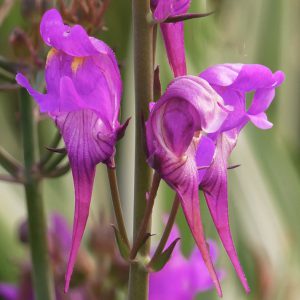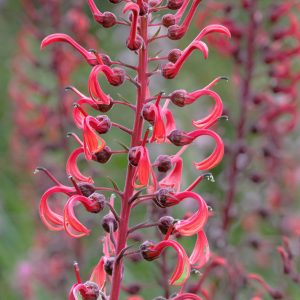- 1-9 pkts $4.50
- 10 pkts FREE
- Express post $12
Celmisia semicordata
N.Z. TIKUMU DAISY
Of all the beautiful N.Z. Daisies, I think Celmisia semicordata is tops.
I love it for both foliage and flower.
Shimmering silver & white foliage in architectural form
I would grow Celmisia semicordata just for the architecture and colour of the foliage alone.
Because it forms a symmetrical, evergreen rosette of silver, sword shaped leaves – with shimmering silver hairs on the upper side of the swords and white felt undersides.
Making a ghostly, formal presence.
Large white daisies
It also bears showy, large white daisies with yellow disc centres in summer.
With the flowers held boldly aloft on strong, silvery stems.
So the whole outfit of silvery leaves and snow white daisies is striking and spectacular in the garden.
And I would love it dearly even if it never flowered.
Easily grown provided it is well drained
Celmisia semicordata thrives in N.Z. in a wide range of habitats, from the sub-tropical coasts to the rocky mountain slopes.
So it is easily pleased providing it has deep soil with plenty of humus and mulch, and good drainage.
However it does not appreciate soggy, clay conditions, however it does appreciate stable moisture levels, without excessive drying out – mulch and humus usually takes care of this.
It is frost hardy (down to approx. -10C.), and enjoys Partial Shade or Dappled Sun in hotter climates, to Full Sun in cooler climates.
Traditional Maori useful plant
The Maori found Celmisia semicordata, or Timuku as they know it, extremely useful for making waterproof clothing.
They stripped the felty, wooly underside of the foliage, as well as the silver haired top layer, to pack into footwear and against cold and thorns; plus sewing into waterproof cloaks.
The early European arrivals learnt from the Maori how to use the wooly leaf layers to dress their wounds, to smoke like tobacco, and as a treatment for chest conditions.
Timuku is one useful plant.
Evergreen perennial approx. 40-60cm. High with white daisies x 40cm. Wide silvery rosette of sword shaped foliage.
SEED SOWING ADVICE:
Sow seeds of Celmisia semicordata at any time of year indoors when temperatures are suitable.
Sow indoors for quick & early plants: First sow the seeds in a punnet on the surface of good quality seed raising mix.
Now gently pat the seeds to the surface of the raising mix to ensure good contact.
But only barely cover the seeds with mix, as these seeds need light to germinate.
Then stand the sown punnet in a shallow water bath and allow the moisture to percolate up to the surface of the mix from below.
Give a pretend winter
Now wrap the moist sown punnet in cling-wrap, or a clip lock bag, and place in the fridge (not the freezer) for 4-6 weeks.
Mark the punnet with the date when you should bring it out.
(You can also save fridge room by placing the seed directly into a clip-lock bag with a small amount of fine-sieved, moist, seed raising mix. Then after the period of chilling in the fridge, you can sow the entire contents of the bag onto the surface of a punnet of seed raising mix).
After the period of chilling – moisten the punnet again, and place the punnet in a warm, well-lit position (not in any direct sunlight).
You can use a temperature controlled heat mat if you have one.
Or a warm, well lit position when temperatures are suitable.
Then continue to keep the sown punnet moist by misting from a spray water-bottle.
Covering the punnet with a clear plastic cover or plastic bag will also help to maintain the necessary consistent, even moisture.
Temperatures of 15-18°C are best for rapid and optimum germination.
Seedlings begin to emerge in approx. 4-8 weeks.
* Please note it is normal for Celmisia seeds to stagger their germination. Some will come more quickly, while others will be slower. This is a natural defensive mechanism of the plant.
So be patient – do not discard the punnet too quickly.
Click here for our Nursery Open Days & Open Gardens Information
https://www.gardivalia.com.au/open-gardens
Click here to go back to Seeds Shop
https://www.seedscape.net.au/shop/
Seed Count: 5 seeds per pack.
Seeds of this unusual plant are scarce.
Related products
-
All
Linaria triornithophora
‘Three Birds Flying’
3 BUDGIES
SALE: Buy 1 get 2 packs
$5.00 Add to cartAdd to WishlistAlready In WishlistAdd to Wishlist -
Add to WishlistAlready In WishlistAdd to Wishlist
-
Add to WishlistAlready In WishlistAdd to Wishlist
-
Add to WishlistAlready In WishlistAdd to Wishlist





